Toyota RAV4 Vs Subaru Forester: Which Crossover Is Right For You?

It’s an inevitable clash of the titans. But who prevails?
It’s no secret how hard-fought the compact crossover segment is. But few cars command a following like the Toyota RAV4 and Subaru Forester. Despite existing in the same segment and even offering similar powertrains, the nature of the two couldn’t be more different. Where one is an urban family vehicle, the other comes across as more youthful and is up to dip its tires in the sand now and then.
Get a Quote on a New Subaru Forester or Toyota RAV4The RAV4 is the best-selling non-pickup truck vehicle in the North American market which itself speaks volumes for its credibility. Anyone considering to buy a family crossover invariably has the RAV4 on their shortlist. The Subaru is the more understated choice and its standard AWD tends to attract the more adventurous types and is a solid rival to the RAV4. So which should you choose? But before we dive in, a little disclaimer; we have left the RAV4 hybrid trims out for this comparison as the Forester doesn’t offer a hybrid and it would be like comparing apples to oranges. With that out of the way, let’s begin.
Interior and Cargo Space
Toyota RAV4: Despite being a little over an inch shorter than the Subaru Forester, the RAV4 offers a slightly longer wheelbase compared to the Subaru Forester. Inside, you get 37.7 inches (957 mm) of headroom in the front and 39.5 inches (1,003 mm) of headroom in the rear which should be enough to accommodate even the taller than average occupants though only just. With a rear shoulder room of 56.4 inches (1,432 mm) seating three abreast though not a challenge can be a squeeze, especially for adults.
As for the cargo space, you can fit 37.6 cu-ft (1,064 liters) of luggage behind the rear bench but folding the bench altogether accommodates 69.8 cu-ft (1,976 liters) of cargo with ease. Although, the RAV4 is about an inch and a half wider than the Forester, the actual usable area inside the cabin is slightly smaller.
Subaru Forester: The Subaru is only 0.5 inches (13 mm) taller than the RAV4 yet manages to offer significantly more headroom in the front. At 41.2 inches (1046 mm) the front headroom is almost four whole inches more than the RAV4. In addition, despite the slightly shorter wheelbase, the Forester also offers 39.4 inches (1,001 mm) of legroom in the rear which is almost two inches up compared to the Toyota.
Subaru however, sacrifices its cargo capacity in favor of a roomier cabin. With both rows up, the base Forester can swallow 31.1 cu ft. (880 litres) of luggage while with the row folded the capacity increases to 76.1 cu ft. (2,154 liters). Trims Premium through Touring come with an even smaller cargo area, measuring 28.9 (818 litres) and 70.9 (2,007 litres) cu ft respectively.
Bottom Line: Where the Toyota offers more luggage capacity, the Subaru compromises the luggage capacity
in favor of useable passenger space. Plus, both offer panoramic moonroofs but where it’s part of an optional package on the RAV4, on the Subaru, it is standard on all trims except the base. A moonroof significantly affects the feeling of space and keeping that in mind, the Forester is the winner in this category.
Powertrain and Fuel Economy
Toyota RAV4: Like its rival, the RAV4 comes with a 2.5-liter four-pot naturally aspirated engine that can be found on most Toyota cars today. It is good for 203 hp and 189 lb-ft of max torque. The engine comes with an eight-speed automatic gearbox and a choice of front- or all-wheel drive. Like most crossovers on sale today, the RAV4 too uses an on-demand AWD system. The car is FWD for regular driving sends power to the rear wheels when it detects a slip.
As for the fuel economy, it varies depending on the trim. The FWD LE trim returns 27 mpg (8.8 L/100km) in the city and 35 (6.8 L/100km) on the highway while in the AWD variant the highway efficiency drops by 1 mpg while the city remains the same. Efficiency for the FWD XLE trims stands at 28 mpg (8.8 L/100km) in the city and 35 mpg (6.8 L/100km) on the highway while the AWD trims lose 1 mpg in the city and two on the highway.
SEE ALSO: 2020 Toyota RAV4 TRD Off-Road ReviewTrims available with AWD only—TRD Off-Road and Adventure—offer almost identical mileage. Both are good for 25 mpg (9.5 L/100km) in the city but the Adventure is 1 mpg more efficient than the TRD on the highway and returns 33 mpg (7.4). In AWD form, the top Limited trim offers the same fuel economy as the Adventure and with FWD, it returns 27 mpg (8.8 L/100km) in the city and 35 mpg (6.8 L/100km) on the highway.
Subaru Forester: Under the Subaru’s hood also resides a 2.5-liter four-pot. But unlike the Toyota, it is a boxer engine and makes 182 hp and 176 lb-ft of torque, significantly less than the RAV4. AWD is standard across the lineup though, as is the case with the entire Subaru portfolio (bar BRZ). The Forester employs a CVT gearbox which comes with seven virtual ratios for better manual control. The virtual gears are available on every trim except the base.
Since the drivetrain is constant across the lineup, the fuel efficiency figures are also quite straightforward compared to the RAV4. The Forester returns 26 mpg (9.0 L/100km) in the city and 33 (7.2 L/100km) mpg out on the highway.
Bottom Line: Both crossovers offer similar levels of fuel economy but it is worth noting that it’s mostly the FWD trims of the RAV4 that are more efficient than the Subaru. But, on paper at least, the Subaru makes 21 hp less and is less torquey too. So since the RAV4 is more frugal and powerful, this round goes to the Toyota.
Features and Technology
Toyota RAV4: The Toyota offers multi-LED headlamps as standard but auto-leveling is available from XLE trim onwards only. Heated wing mirrors along with blind-spot warning indicators are also standard across the range. The LE trim comes with a single-zone climate control system while the XLE gets the dual-zone system with rear vents. XLE Premium grade and above get vent flow controls as well. In the Canadian market, however, the dual-zone system is part of the standard package.
SEE ALSO: Subaru Crosstrek vs Mazda CX-30 ComparisonThe LE, XLE, and XLE Premium trims come with analog instrumentation along with a 4.2-inch MID screen in the middle. A swankier seven-inch digital screen coupled with the analog tachometer is reserved for the top three trims only. Power-adjustment is reserved for the driver’s perch only regardless of trim. In the XLE you can have fabric seats with eight-way power adjustment and for memory functionality, you need to either step up to the top Limited trim or opt for a package on the XLE Premium. Heated seats are only available XLE onwards and ventilated seats Adventure onwards.
The lower trims come with a smaller 7.0-inch infotainment system. Though it features both Apple CarPlay and Android Auto, it only comes with a six-speaker system. A more premium 11-speaker JBL sound system is also available but only as a package on XLE Premium trims along with the larger 8.0-inch infotainment system.
As for safety, Toyota offers its Safety Sense 2.0 as standard across the RAV4 range. It features a pre-collision system with pedestrian detection, lane departure alert with steering assist and radar-guided cruise control among others. Blind-spot monitoring with rear cross-traffic alert however is optional on the LE trim and standard kit XLE onwards.
Subaru Forester: Subaru offers the Forester with LED headlamps as standard too, along with added functionality of steering responsiveness. In addition, the Forester also comes with a 10-way power-adjustable driver’s perch as standard Premium trim onwards. Power-adjustment for the passenger seat is available on the top trim only. Heated front seats along with 4G LTE Wi-Fi capability are also part of the standard kit and so is the climate control system. A dual-zone system is only available on the Limited and Touring trims, though.
SEE ALSO: 2020 Toyota RAV4 Hybrid Review: The Dependable OneA 6.5-inch touchscreen is standard on the Subaru and is the only option on the base Forester. You can upgrade to the 8.0-inch system on the Sport as a part of a $1,645 optional package, but it comes as standard on the Limited and Touring trims. A six-speaker system is standard across the range. An upgrade to a Harman Kardon premium audio system is optional on the Sport and the Limited, but is part of the standard package on the Touring trim.
Subaru offers its EyeSight Driver assistance technology as standard across the Forester range. It includes features like pre-collision braking system, throttle management, lane departure and sway warning and adaptive cruise control with lane-centering. Blind-spot detection, however, is not available on the base, optional on Premium and standard Sport trim onwards. Lastly, reverse automatic braking is available as an option on the Sport and Limited and part of standard kit on the Touring.
Bottom Line: The RAV4 and the Forester are almost evenly matched in terms of equipment on offer. The Subaru does offer a more intuitive infotainment system and a power-adjustable passenger seat but the RAV4 offers a tri-zone climate control compared to the Subi’s dual-zone system. It also offers ventilated seats and an 11-speaker system while the Subaru only gets heated seats and a nine-speaker system. The Toyota also offers a larger screen as standard and marginally pulls ahead of the Forester to win the category.
Styling
Toyota RAV4: The RAV4 is an aggressive looking vehicle and quite a departure from its predecessor. Perhaps edgy would be an apt description of the design. The slant of the headlamps and a downward sloping grille give it a face akin to a feudal samurai battle mask, a tad too aggressive for something that’s otherwise quite friendly.
There’s plenty of plastic cladding all around and the rear looks rather sleek with its slim wraparound tail lamps and a high-set rear window. Simply put, it looks like a city dwelling crossover. In TRD guise, it looks like a city dwelling crossover in adventure gear.
Subaru Forester: A more traditional design approach results in a more upright and boxier vehicle. Although clearly a crossover, a high-set hood and squarish proportions give the Forester a more SUV-esque vibe. The overall design is simple but does have some added flair thanks to a strong belt line and protruding wheel arches.
It looks especially appealing in the Sport trim with tastefully done red accents. But aesthetically at least, the rear three-quarter is its weakest point. Remove the badge and you’ll be hard-pressed to recognize it.
Bottom Line: Looks are subjective, so let’s leave it at that.
Pricing
Toyota RAV4: Starting at $27,325, the LE FWD is the most affordable RAV4 you can buy. For the money you get a fabric upholstered interior and a 7.0-inch touchscreen; Android Auto and Apple CarPlay are standard. Next on the grade walk are the XLE and XLE Premium starting at $28,620 and $31,325, respectively. Starting at $35,855, the Limited is the top trim in the RAV4 lineup that is available with both FWD and AWD.
SEE ALSO: Mazda CX-9 vs Toyota Highlander ComparisonThe Adventure is one of two trims that are only available with AWD, the other being the TRD Off-Road. The Off-Road is the top-most trim on the RAV4 lineup and starts from $37,055. Think of the Adventure trim as an AWD version of the XLE Premium with prices starting from $34,430. One thing to note here is that the RAV4 doesn’t offer the more premium features as standard on any of its trims. You need to shell out extra cash if you want features like in-built navigation, the JBL speaker system or wireless charging as they are only available as part of optional packages.
Subaru Forester: Prices for the Forester start from $25,845 for the base while the Premium trim starts from $28,845. It adds features like fog lamps, panoramic moon roof, windshield wiper de-icer and heated wing mirrors over the base. Other features over the base include power adjustable seats, a six-speaker sound system and Starlink safety and security. Sport starts from $30,445 and adds 18-inch alloys, and paddle shifters for the seven virtual ratios—it’s the only trim apart from Touring to have them.
It also comes with the option to upgrade to the larger 8.0-inch screen from the 6.5-inch once that is standard. Limited and Touring start from $32,445 and $35,945 respectively and are the only trims to have the 8.0-inch system as standard. The Touring trim comes with Multimedia Navigation as well, a feature that is optional on the Limited. The Harman Kardon system is available as an option on the Sport and Limited but is standard on the Touring.
Bottom Line: The Forester undercuts the RAV4 all the way through even the base is almost $2,000 less expensive its compatriot despite offering more equipment like standard AWD. It also offers more convenience features at a lower price point as well and hence is the clear winner here.
Verdict: Toyota RAV4 vs Subaru Forester
While both the Subaru Forester and the Toyota RAV4 exist in the same segment, they are completely different in terms of what they offer and focus on. Where a boxer engine powers the Subaru, the RAV4 has an inline four-pot under the hood. Also, where the RAV4 offers countless trims with different combinations and features, Subaru keeps it simple. AWD is standard and what you see is what you get.
The Forester also comes with a superior infotainment system and the top trim requires no add-ons as far as features are concerned (accessories are different). Whereas in the Toyota, you need to shell out extra for navigation and a superior sound system. It is also the smaller of the two and can’t compete with the Subaru in terms of off-road capability. So, despite the power deficit and the CVT gearbox, the Subaru comes across as better all round package and hence is the winner of this comparison.

More by Kshitij Sharma



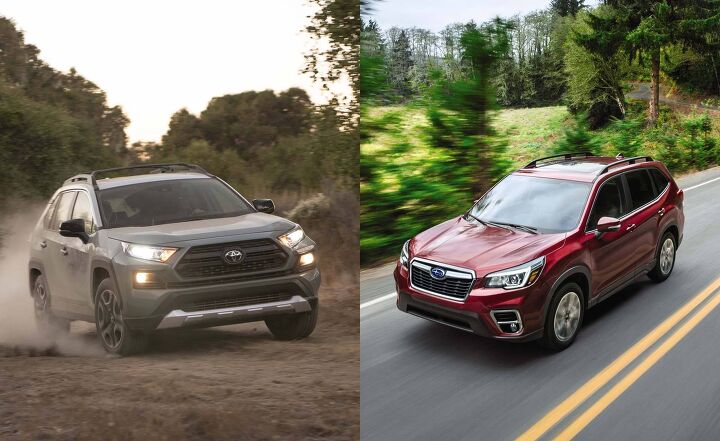








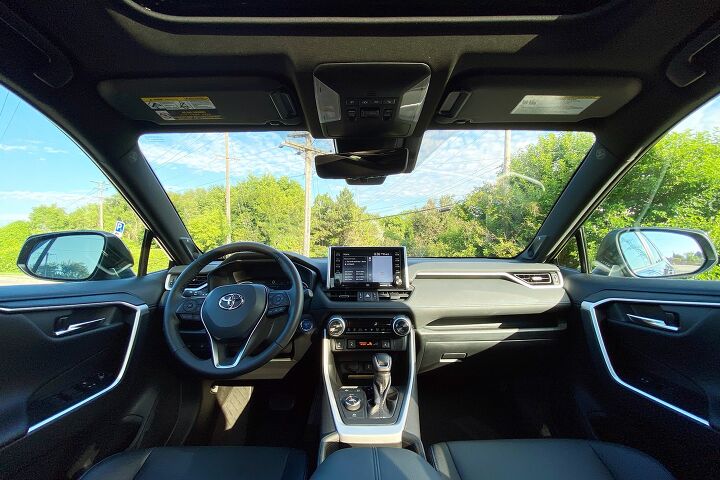






















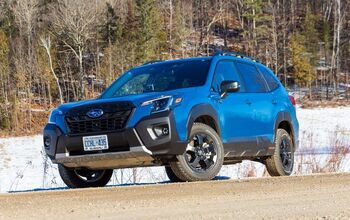
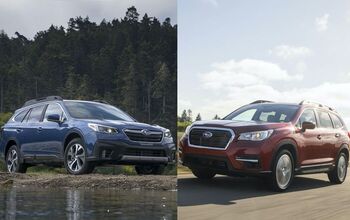
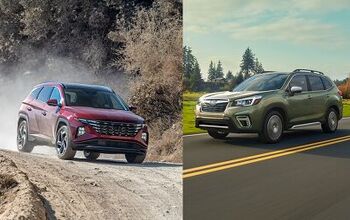
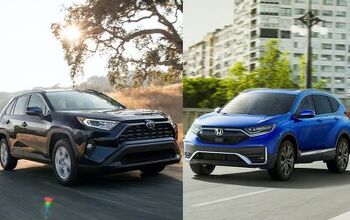
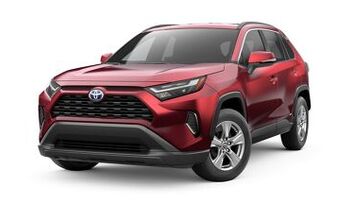



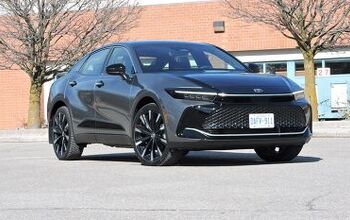
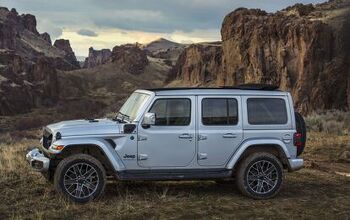

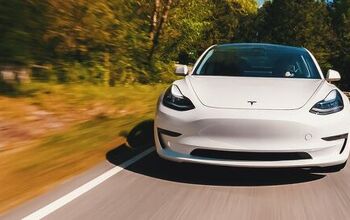
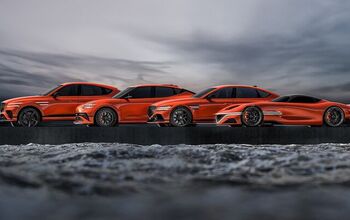
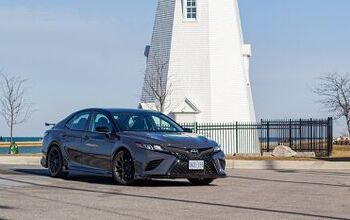
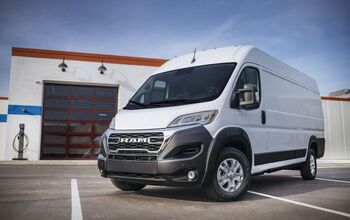
Comments
Join the conversation
Looking for a lease price on the Subaru Sport . No trade , 3yrs / 36 k .$1000 out of pocket